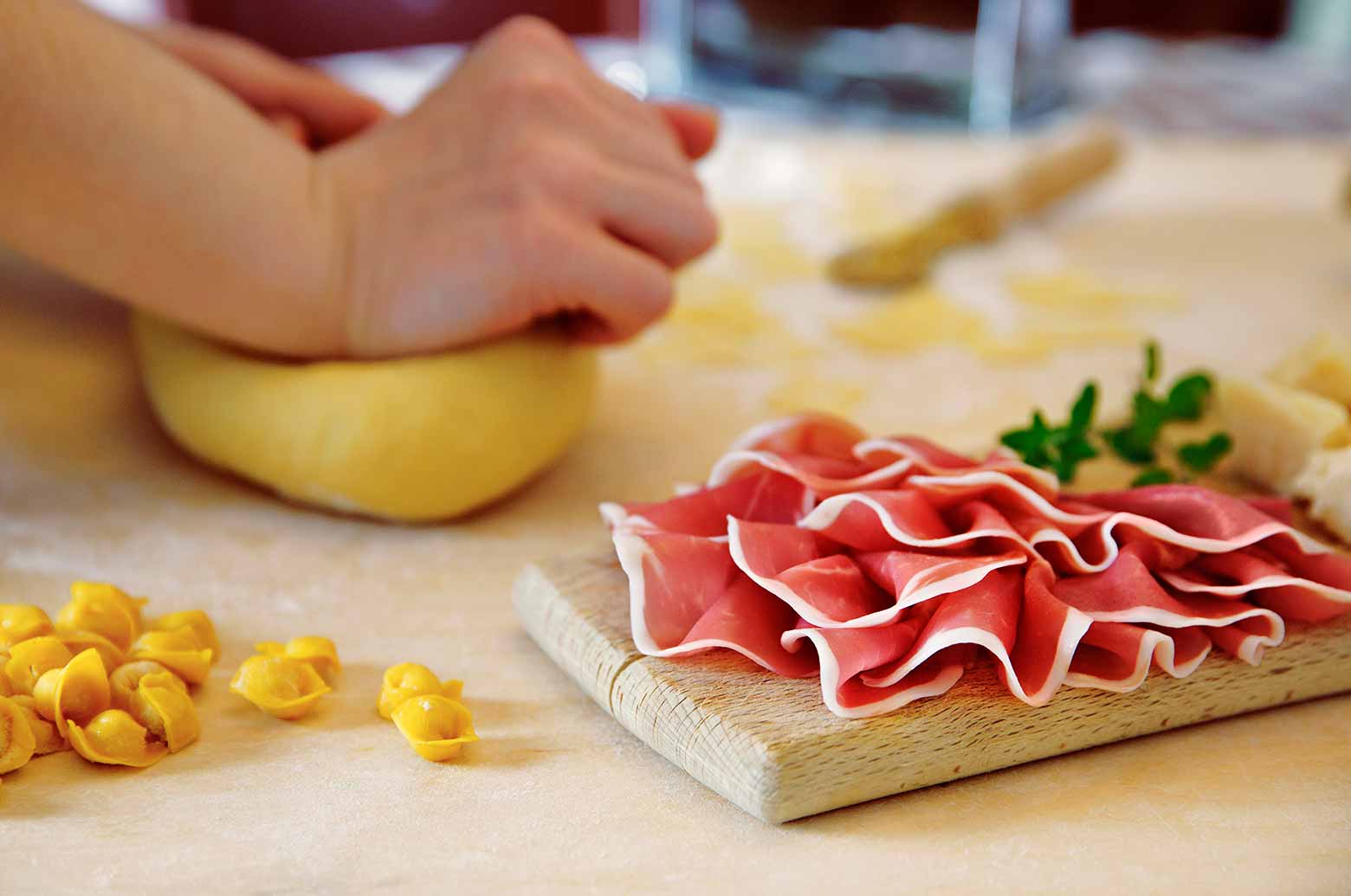
Pour the flour onto the wooden pastry board, making a volcano shape. Break the eggs carefully into the hollow and beat with a fork to incorporate the flour. Knead with the palms of your hands. Press out the dough and turn it over to incorporate air. Every movement adds elasticity and makes the dough supple. Knead the dough patiently and vigorously for at least ten minutes, until the mixture is smooth and lump-free with a medium consistency. If the texture is too hard or too soft, adjust with a little flour; practice makes perfect. Leave the dough to prove in a plastic bag for at least 20 minutes. Now it is time to roll out the dough with a rolling pin and this is when the problems could start.
First, scrape the pastry board with a knife to remove previous dough residue, sprinkle with a little flour and start rolling out the dough with the rolling pin (a noble kitchen utensil and symbol of culinary power). It is essential that the arms be open wide so that the rolling pin rolls under the palms of the hands.
During this operation, dust the pastry board with flour to prevent the dough from sticking and holes from forming (which often happens the first few times). The rolling pin must roll freely and compress the dough firmly. Turn the dough by 90 degrees several times and roll a few more times. Then make short, quick and precise movements to round off the edges with the rolling pin. As the thickness decreases, check that it is even and adjust it using the rolling pin. As the sheet of dough grows, leave one end to drop between the pastry board and the body, continuing to roll repeatedly, until the dough reaches the desired thickness.
The end result must be a large oval disc of pasta, about 1 millimetre thick for tortellini and 1.5 millimetres thick for tagliatelle.
At this point, if we want to make tortellini, we have to cut the pasta into squares with sides measuring 3.8-4 cm onto which we are going to place some filling. We then fold one corner of the square over onto the opposite corner, to make a pasta triangle containing the filling, sealing it by pressing along the two edges. Now the two side points of the triangle are joined together creating a sort of ring around the tip of the index finger, forming the characteristic tortellino shape. It is particularly important to seal the tortellini securely to prevent the filling from leaking out while cooking. If we wish to make tagliatelle to serve with sauce or tagliolini to serve in broth, then we must proceed as follows: wait about 10-15 minutes for the pasta to dry out a little, then roll up the sheet and use a kitchen knife to cut the pasta into 1-2 mm thick slices if we want to cook them in broth or 6-7 mm thick slices if we are going to serve them with a meat sauce. After slicing the whole roll of pasta, unroll the tagliatelle made and drop them into little mounds like nests. Leave these nests to dry for at least 24 hours. Pasta sheets can be used to make other shapes, such as pasta bows, maltagliati, quadrucci, etc.
The quantities indicated are enough for four people.